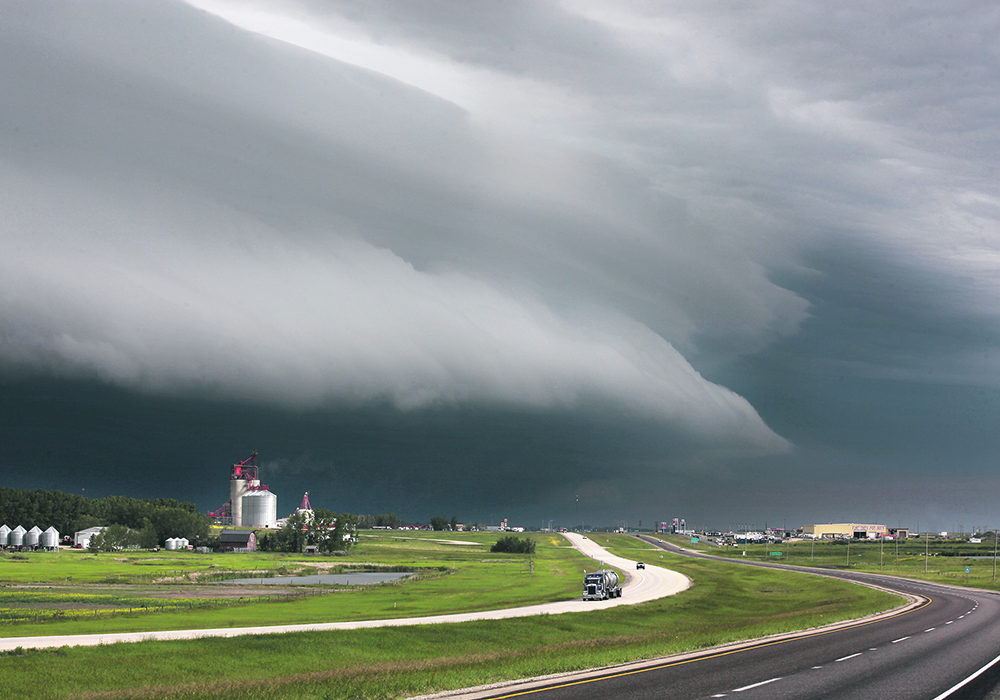Regions with healthy soil, grasslands and wetlands are found better able to deal with damage from climatic extremes
Last year was a summer of extremes in Manitoba.
It barely rained in June or July, which hammered hay production. Many farmers reported hay yields of 50 percent of normal or less, and there was a severe shortage of forage in some areas.
Then it rained nearly every day in the second half of August and throughout September, flooding fields and making harvest difficult to impossible.
Trevor Daymond, who farms near Cypress River, Man., estimated that 250 millimetres of precipitation fell on his land from late August to the middle of October.
Read Also

Saskatchewan dairy farm breeds international champion
A Saskatchewan bred cow made history at the 2025 World Dairy Expo in Madison, Wisconsin, when she was named grand champion in the five-year-old Holstein class.
A study, led by the Manitoba Forage and Grassland Association (MFGA), suggests it’s possible to reduce the damage caused by such extreme weather.
When conditions shift from drought to flood and back to drought, “regions with healthy soils, grasslands and wetlands are much better-positioned to deal with the negative impacts to the system,” MFGA said in a mid-May news release.
That conclusion is based on an analysis of the Oak River watershed in western Manitoba. The watershed is about 2,000 sq. kilometres, located northwest of Brandon.
Steven Frey, a scientist with Aquanty, a water resources and technology firm in Waterloo, Ont., conducted the study.
He used a modelling system called HydroGeoSphere to evaluate the watershed’s response to climatic extremes.
“The sensitivity analysis was conducted for the 2009-15 time interval, which includes the 2011 and 2014 floods, as well as a number of drier years, such that the influence of landscape factors can be assessed for both wet and dry conditions,” said Frey, who recently presented his findings to representatives from agriculture, government and conservation groups in Manitoba.
The model showed that healthy soils are a bulwark against drought and flooding because they allow more water to infiltrate the soil. Grasslands and wetlands also play a huge role by slowing the movement of water and storing it on the land.
“Producers, land managers and conservation professionals who work on agricultural-based lands will tell you that healthy soils, grasslands and wetlands — vital components of livestock production and conservation focuses — are valuable forces in buffering the impacts of flood and retaining water supplies during drought,” said Larry Wegner, MFGA chair.
Last summer, during the peak of the drought in Manitoba, many livestock producers scrambled to buy hay or any kind of forage for their cattle.
A large number of farmers sold a portion of their herd, so their limited forage supplies would last until spring.
It’s difficult to know, for certain, if healthier soils could have maintained forage production during the drought. But it’s becoming clear that climatic extremes — wet, dry, wet, dry, dry — are the new normal in Western Canada.
Farmers and water resource experts need to understand if their land management choices make things better or worse. That’s why the Aquanty model is useful, Frey said.
“This work is exciting in that it is providing a bridge between state-of-the-art science and on-the-ground practices… to help guide us towards an agricultural landscape that is optimized for climate resiliency.”
The MFGA plans to use the Oak River study to inform the public about the model and how it could be used in other watersheds.
“This information from the Oak River scenario clearly shows the power of soil, grasslands and wetlands,” Wegner said. “That is something many Manitobans should be aware of. It’s a natural water management system that Manitobans directly benefit from.”
















